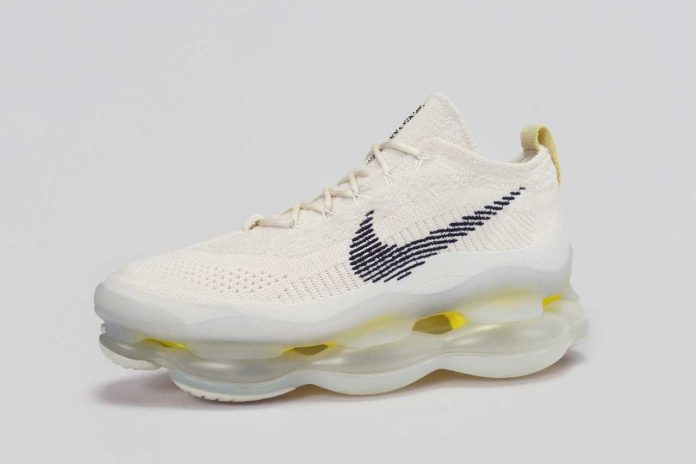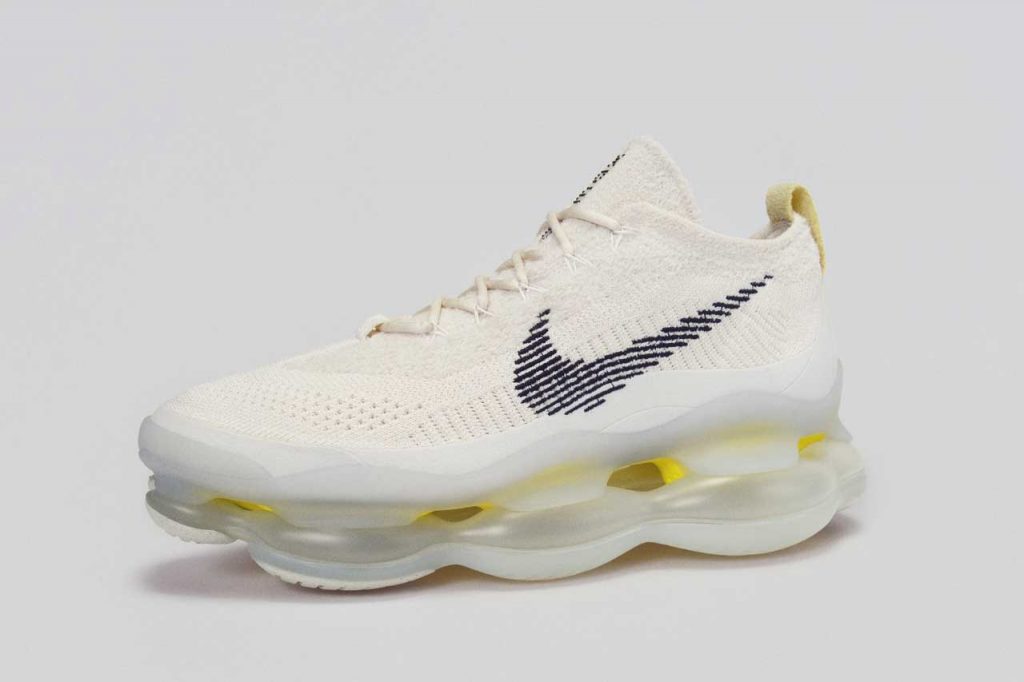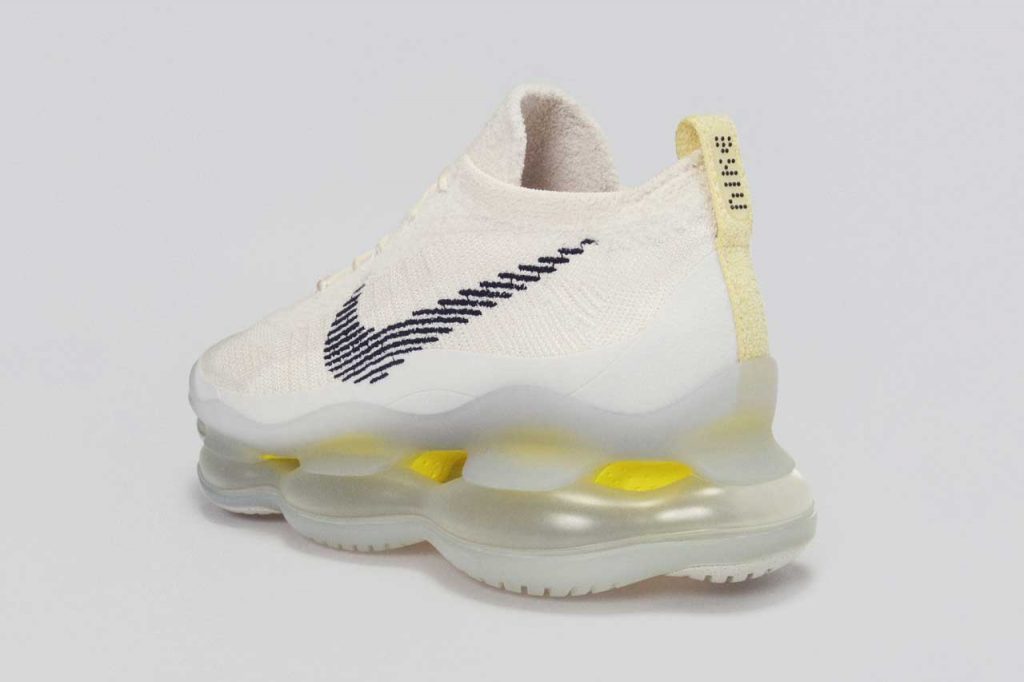With a condensed development timeline of 18 months, Air Max Scorpion shows how Nike’s digital transformation is accelerating its culture of innovation. It introduces a radical system for Air units, moving from simple forms into complex new geometries for a unique underfoot sensation, and was created to bring wearers greater awareness of their movement.
The pace of creation was made possible through application of new VR design software and simulation tools allowing for real-time, hand-in-hand collaboration between designers, engineers, and developers through the pandemic. Embedded in the design are morphology data and pressure maps derived from the Nike Sports Research Lab (NSRL). Testing and prototyping were accelerated through both Finite Element Analysis (FEA), which assesses the system’s performance against real-world demands, and in-house rapid testing of virtual prototypes (or digital twins) that together dramatically reduced the need for, and environmental impact of, physical samples.
Nancy Eisenmenger, Expert Materials Researcher, notes this improved process allowed the team to find the edge of the material’s limits and then “optimize for performance and manufacturability without any aesthetic compromise.” Whereas previous testing protocol took eight weeks for a single idea, design concepts could now be tested by the dozen in just five weeks. Computational design, pioneered by Nike for industrial design applications, helped identify the optimal outsole traction pattern and precisely grade Air Max Scorpion’s performance benefits across sizes, with Air MI answering the call by developing over 14 different tooling sets.
The result is the most Air on offer in terms of pounds per square inch, pressure graded (i.e. fine-tuned) across sizes.
As a complete package, the Air Max Scorpion’s airbag system takes sensorial design to new heights by providing a piston-like effect through strategically determined, point-loaded contact points between the foot and the airbag. The new Air system is balanced by a first-of-its-kind Flyknit chenille upper in which short fibers are held perpendicularly in place by two twisted vertical core yarns to form a soft pile texture.
Nike Air Max Scorpion, which is twenty-percent recycled content by weight, launches on October 5.






